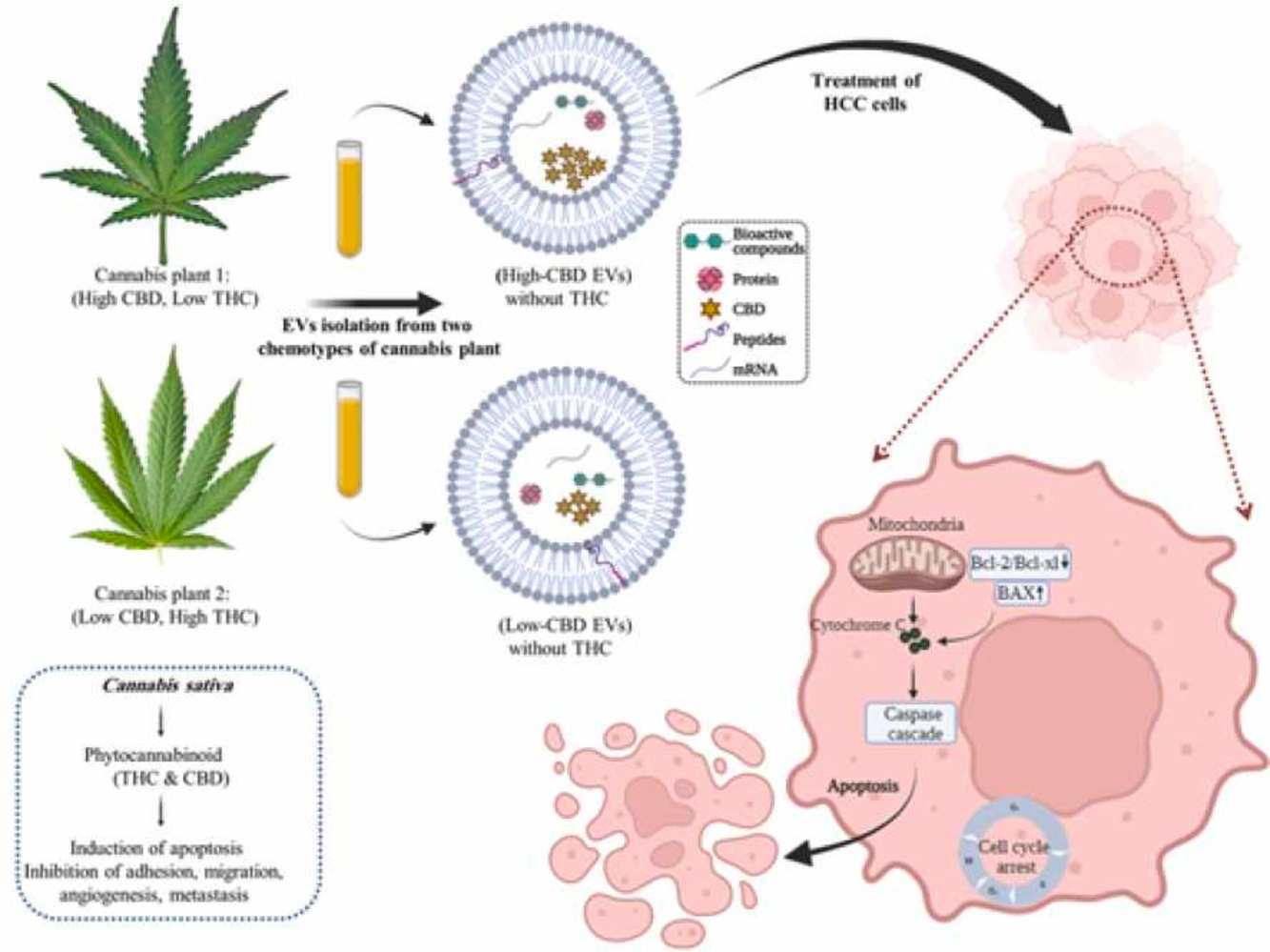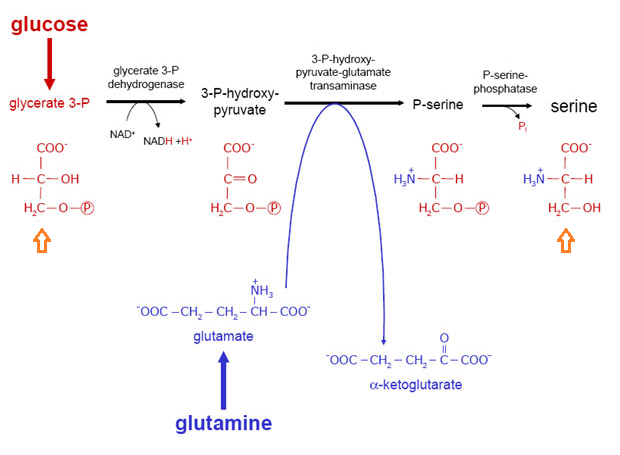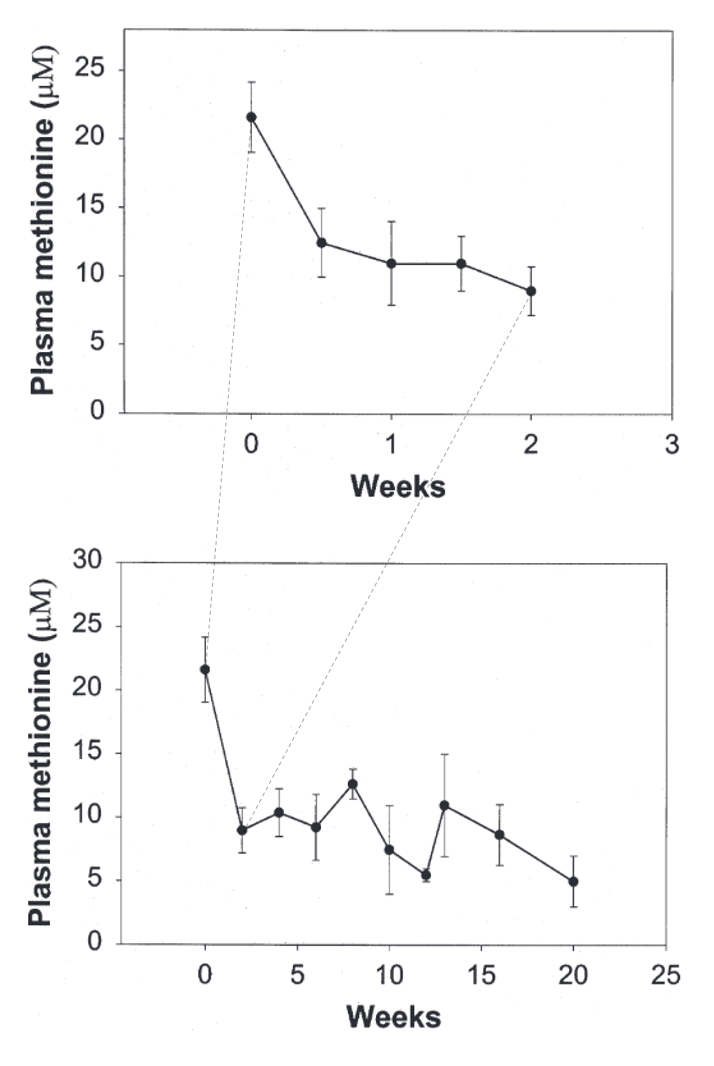cancer
-
@brad it is a little tough to show more than anecdotal evidence but I will try.
https://www.sciencedirect.com/science/article/pii/S0753332222005984
this study tries to "sell" these tiny vesicles as a delivery mechanism to cancer, but it uses THC and CBD

this is kind of anecdotal on CBD
https://www.ncbi.nlm.nih.gov/pmc/articles/PMC8559110/https://www.sciencedirect.com/science/article/pii/S2667394022000120
CBD increases effectiveness of breast cancer therapiesTHC in HER2-positive breast cancer
https://pubmed.ncbi.nlm.nih.gov/30733293/The cannabinoid Δ9-tetrahydrocannabinol (THC) disrupts HER2-CB2R complexes by selectively binding to CB2R, which leads to (i) the inactivation of HER2 through disruption of HER2-HER2 homodimers, and (ii) the subsequent degradation of HER2 by the proteasome via the E3 ligase c-CBL. This in turn triggers antitumor responses in vitro and in vivo. Selective targeting of CB2R transmembrane region 5 mimicked THC effects. Together, these findings define HER2-CB2R heteromers as new potential targets for antitumor therapies and biomarkers with prognostic value in HER2-positive breast cancer
and a review article
https://pubmed.ncbi.nlm.nih.gov/29390896/
the endocannabinoid-degrading enzymes fatty acid amide hydrolase and monoacylglycerol lipase, lipid transport proteins of the fatty acid binding protein family, additional cannabinoid-activated G protein-coupled receptors, members of the transient receptor potential family as well as peroxisome proliferator-activated receptors have been considered as targets of antitumoral cannabinoid activity. Therefore, this review focused on the antitumorigenic effects induced upon modulation of this extended endocannabinoid network. -
https://www.nature.com/articles/1210641
Additionally, in in vivo studies in severe combined immunodeficient mice, there was significant inhibition of the subcutaneous tumor growth and lung metastasis of A549 cells in THC-treated animals as compared to vehicle-treated controls. Tumor samples from THC-treated animals revealed antiproliferative and antiangiogenic effects of THC.https://journals.plos.org/plosone/article?id=10.1371/journal.pone.0228909
The tumor samples were classified according to the level of expression of CB1, CB2, or both. Patients with high expression levels of CB1, CB2, and CB1/CB2 showed increased survival reaching significance for CB1 and CB1/CB2 (p = 0.035 and 0.025, respectively). Both cannabinoid agonists inhibited the proliferation and expression of EGFR in lung cancer cells, and CBD potentiated the effect of THC. THC and CBD alone or in combination restored the epithelial phenotype, as evidenced by increased expression of CDH1 and reduced expression of CDH2 and VIM, as well as by fluorescence analysis of cellular cytoskeleton. Finally, both cannabinoids reduced the in vitro migration of the three lung cancer cells lines used.Conclusions
The expression levels of CB1 and CB2 have a potential use as markers of survival in patients with NSCLC. THC and CBD inhibited the proliferation and expression of EGFR in the lung cancer cells studied. Finally, the THC/CBD combination restored the epithelial phenotype in vitro. -
A good review article on how cannabis inhibits or reverses cancer
https://www.mdpi.com/1422-0067/21/3/747Breast, brain, pancreatic, prostate, blood…virtually all cancers.
A couple of interesting observations I’ll make from this review.
An increasing number of reports highlighted the role of cannabinoids in cancer spreading, specifically in invasion, angiogenesis, migration, and metastasis mechanism [5,6,7,8,9,10]. Likely, these mechanisms can be triggered through the modulation of different pathways.
As a consequence, a down-regulation of the proangiogenic factors vascular endothelial growth factor (VEGF), placental growth factor (PlGF), and angiopoietin-2 (Ang-2) occurs [8]. Moreover, cannabinoids inhibit angiogenesis and invasion,
Another interesting observation derives from glioma and breast cancer, where the treatment with CBD or the CB2 agonist O-1663 exerts the inhibitory effect on cancer cell invasion through a down-regulation of Id-1 and Sox-2 protein expression [6].
Encouraging results were obtained in regards to the FAAH inhibitors, AA-5HT (N-arachidonoyl-serotonin) and URB597. Used alone, AA-5HT exerts an antiproliferative effect in glioma and thyroid cancer [5].
Moreover, in azoxymethane (AOM)-induced colon cancer murine models it reduces the onset of aberrant crypt foci, probably in a CB1-dependent manner [16]. URB597 showed a potent antiproliferative effect used in combination with AEA (or Met-F-AEA) in neuroblastoma, lung, and colon cancer, or combination with PEA in melanoma cancer cells [5]. In lung cancer, both AA-5HT and URB597 contrast tumor invasion through TIMP-1 upregulation, likely in a CB2- and TRPV1-dependent way [17]. The MAGL inhibitor JZL184, inhibiting proliferation and tumor cell invasion, induces apoptosis in colon and prostate cancer [18,19]. Interestingly, URB602, another MAGL inhibitor, reduces AOM-induced preneoplastic lesions and reduces tumor volume in vivo in colorectal cancer (CRC) models. Moreover, URB602 inhibits angiogenesis down-regulating vascular endothelial growth factor receptor (VEGFR) and fibroblast growth factor 2 (FGF-2) [20].
2.2. Cannabinoids Affect non-CB1/CB2 ReceptorsBeyond CB1 and CB2 receptors, it is well known that other non-CB receptors are involved in antitumor action of cannabinoids, representing another interesting target for therapeutic intervention. TRPVs are non-selective cation channels found to be a key player in cannabinoids-induced anticancer effects.
-
This post is deleted! -
@Ecstatic_Hamster said in cancer:
@eugene fasting by stopping the consumption of food can be useful so long as you consume salty coconut water and fruit juice to preserve electrolytes and lower cortisol somewhat. And I wouldn’t do it more than 36 hours at a time.
It has one benefit, which is lowering endotoxins.
I think a diet primarily consisting of non-animal protein is very important. Keeping methionine below 1g per day is useful to stop cancer from spreading.
I think Dr. Peat never explored methionine to a great degree, at least I never heard him talk much about it, but methionine from animal protein is a factor that limits life and that promotes cancer. It is why a keto diet is a bad bad idea in cancer.
On the contrary - he talked about limiting methionine quite a lot in interviews.
https://bioenergetic.life/?q=methionine+
https://raypeat2.com/articles/articles/gelatin.shtml
"It happens that gelatin is a protein which contains no tryptophan, and only small amounts of cysteine, methionine, and histidine. Using gelatin as a major dietary protein is an easy way to restrict the amino acids that are associated with many of the problems of aging."
Dr. Peat said;
"Any stage of healing wound can be identical to cancer. "https://bioenergetic.life/clips/d96b2?t=4352&c=92
I wonder what this means for the diagnosis of cancer? Is it a healing wound or is it cancer?
-
@Peatly I mean this, that Dr. Peat talked about restricting methionine a bit, but he promoted dairy and ate that a lot himself, which is higher in methionine and he never advocated a plant based diet primarily.
I have found that many times, wounds can turn into cancer sites. I have found this through listening to many people’s account of getting cancer, and in some cases, an injury or wound preceded the cancer. I don’t know if that’s what Dr. Peat meant, but it is something I observe quite often.
-
Probably a decrease in metabolism. Cold hands and feet, mental problems. I suffer from these, felt like I was on the verge of death today but I saw @haidut study on cancer treatment using b1 b3 b7 and aspirin so decided to take all of those today in doses of 1g, 500mg, 10mg and 600mg and it had profound effects on my mental clarity and energy to the point where I felt more normal again.
Going to up the dose tomorrow as I experienced no stomach upset with the aspirin which was my main worry. Seems to fair well when taken shortly after the B vitamins. Off topic but I wanted to share
-
@Ecstatic_Hamster said in cancer:
@Peatly I mean this, that Dr. Peat talked about restricting methionine a bit, but he promoted dairy and ate that a lot himself, which is higher in methionine and he never advocated a plant based diet primarily.
I have found that many times, wounds can turn into cancer sites. I have found this through listening to many people’s account of getting cancer, and in some cases, an injury or wound preceded the cancer. I don’t know if that’s what Dr. Peat meant, but it is something I observe quite often.
Yes, Dr. Peat did drink a lot of milk but he restricted his meat consumption for more gelatinous cuts. I think he would say that the calcium in milk was protective as inadequate calcium intake is a risk factor for some types of cancers.
The thing about wounds that turn into cancer, can we be sure that they were really cancer? In one interview he said benign tumours were being reclassified as cancer. So, what was just a harmless lump, 50 years ago, is now cancer.
“An article in JAMA about 40 years ago looked at the evidence of how the pathology methods of analyzing the properties of the cytoplasm nucleus ratio and the matter of disorganization and invasion and so on and in this article it was demonstrated that a healing wound if it's biopsied will show all of the properties that are used by the pathologist to identify cancer so that what is defined as cancer has become more inclusive and if you happen to have an injury that gets biopsied it'll be called cancer because it has the properties of of rapid growth uh invasive appearance and so on.” Ray Peat
-
@Ecstatic_Hamster LOL this has to be a joke.
-
“About 40 years ago, three different doctors diagnosed, told me that I should have a biopsy on three different things. And since I had already been studying what doctors do and know about cancer, I ignored them and increased my thyroid and used a little nutritional addition like extra vitamin A and folic acid. I put some progesterone and DHEA on the area. And so far, that's 40 years ago, and none of them have persisted.” Ray Peat
-
P Peatly referenced this topic on
-
Now AI can help
misdiagnose your cancer -
@Ecstatic_Hamster said in cancer:
I think Dr. Peat never explored methionine to a great degree, at least I never heard him talk much about it, but methionine from animal protein is a factor that limits life and that promotes cancer. It is why a keto diet is a bad bad idea in cancer.
even the little methionine in gelatin?
-
Seems like all the roads point to vegetarianism in many ways.
-
-
A blood test to look for fragments of DNA in the bloodstream
“She was offered a blood test, also described as a "liquid biopsy" which looks for fragments of DNA which have broken off tumours and are in the bloodstream.
This so-called "circulating tumour DNA" revealed that Kat's cancer growth was being driven by a mutation in the ALK gene.”
I won't state the obvious
This story was published hours before the announcement that the other Kate has cancer.
-
I was told by a nurse that there are a lot of cancer deaths in men lately. When I asked what type she said prostate. I guess the screening trial is "working"
https://raypeat2.com/articles/articles/prostate-cancer.shtml
-
@Ecstatic_Hamster Maybe it'd be useful if you summarised the parts of your research you think are most important, as people might not know the right questions to ask.
I did wonder if you had any thoughts about cancer prevention, as opposed to cure? Anything other than aspirin, avoiding pufa, avoiding excess iron/phlebotomies, excess methionine.
-
@Jakeandpace literally the same as me. The past few days I have been taking thiamine, b complex and aspirin, along with k2, E and D and my energy levels and mental clarity / happiness are noticeably elevated. I don’t think Haidut is bullshitting about aspirin.
-
@raytreats Good to hear my man. I am opting for lower doses since doing the big ones for a while. I don't think Niacinamide in such high doses is beneficial. I much prefer the smaller ones spread throughout the day. 2g in one dose made me feel very weird like I wasn't really having any thoughts, just purely in the moment. Kind of odd, I didn't like it.
-
Methionine Dependence of Cancer
"[..]even though flux through polyamine synthesis needs to be high, especially in dividing cells, neither the methionine cycle nor polyamine synthesis consumes methionine. However, methionine is removed by protein synthesis and indirectly through the transsulfuration pathway leading to cysteine synthesis and feeding antioxidant production (
Figure 2A).""Most cancer cells cannot proliferate in medium where methionine is replaced by homocysteine, even though they readily synthesize methionine from homocysteine (
Figure 1).""Several cancer cell lines and tumors depend on exogenous serine. This is surprising because serine can usually be synthesized from glucose in sufficient amounts via the glycolysis intermediate 3-phosphoglycerate [40,41]. However, the increased demand of cancer cells on glycolysis for energy production may divert the flux of 3-phosphoglycerate from serine synthesis to glycolysis. Serine requirement for cancer cell proliferation may thus link the Warburg and Hoffman effects by connecting glycolytic flux with SAM synthesis."
"Preclinical models have shown promise with dietary methionine restriction significantly suppressing tumor growth in multiple models, which include both solid tumors and blood cancers [59,65,66,67,68,69]."
Serine synthesis | Eigenbrodt and Mazurek

Serine hydroxymethyltransferase | Proteopedia

I had thought of depleting methionine by overwhelming sulfotransferases, increasing its internal consumption to derive sulfate for conjugation of other molecules, but it seems that it's not viable and the body switches to glucuronidation when needed.
Human Sulfotransferases and Their Role in Chemical Metabolism
"Many of the substrates metabolized by sulfotransferases are also substrates for UDP-glururonosyltransferases, and in this context, the former system has generally been considered a high-affinity, low-capacity pathway, whereas the latter system is considered a low-affinity, high-capacity pathway (Burchell and Coughtrie, 1997). This suggests that SULTs may be more important than UDP-glucuronosyltransferases in the metabolism of chemicals via low-level exposure from the environment or through food consumption."
"[..]the expression of SULTs in humans has been shown to exhibit a pronounced extra hepatic pattern, whereas in rodents it appears to be predominantly hepatic (Eisenhofer et al., 1999, Hempel et al., 2005)."
It must be best for the methionine restriction to affect its concentration in circulation (or else cells keep acquiring it) and to moderate the one-carbon donors that promote its regeneration.
I remember a discussion on the following publication that Bulgaria brought up on the 'amino acid supplementation' thread of the Garrey Smeat Forum, and it shows that it's possible to be extreme about it:
"A recent study designed to quantify dietary methionine requirements in normal subjects sheds light on this issue (22). In that study, stable isotope methods were used to measure obligatory methionine oxidation in normal subjects on a diet completely devoid of sulfur amino acids (methionine and cysteine) for 5 days. Although somewhat controversial (23), obligatory oxidation rates are considered by many to represent the minimum requirement for amino acids, that is, the amount that is oxidized despite maximal body conservation. The obligatory oxidative loss of methionine was 13 mg/kg/ day in that study (22). Patients in our trial, who were restricted to 2 mg methionine/kg/day, therefore, consumed 11 mg/kg/day less than the minimum requirement. However, they consumed adequate amounts of cysteine, which is present in Hominex-2. They therefore may have had obligatory methionine oxidation rates <13 mg/kg/day. The fact that all patients reversibly lost weight, despite what would normally be considered adequate energy and protein intake, may actually be encouraging, since it confirms that patients adhered to the diet. The basic premise of this strategy is that dietary methionine restriction will have a greater deleterious effect on tumors than on normal host tissues."

The effect was achieved with dietary restriction, without involving methioninase.